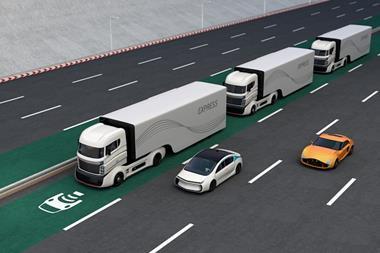Richard Jinks, head of portfolio solutions, global and autonomy programme lead at XL Catlin, explains how the ground-breaking DRIVEN project will help to understand the risks of autonomous vehicles

XL Catlin is the only insurer taking part in DRIVEN, a consortium planning to deploy a fleet of connected, fully autonomous vehicles. Could you explain a bit more about the project and XL Catlin’s involvement?
This ground-breaking project will be the first attempt to deploy an autonomous fleet operating in Motorway and Inner City environments at level four autonomy – which means that the cars will be capable of performing all safety-critical driving functions and monitor road conditions with no passenger occupancy.
The project is run by a consortium of leading British companies and is led by Oxbotica, the artificial intelligence company based in Oxford.
We have been collaborating with Oxbotica since January 2016, and this work is helping us to understand both the design solutions and the risks involved in ultimately bringing this technology to market for wider use – and making it an insurable commercial reality.
Working with the members of the consortium, our part is to create a risk assessment tool that will enable the user of the vehicle to make a decision about what level of autonomy is appropriate for a wide set of specific conditions. The tool will assess things like whether the car knows the route, information from transport organisations – such as whether there are accident blackspots along the route, traffic volume feeds for Transport for London, and feeds on weather conditions.
What are the risks associated with the broad commercial use of driverless vehicles?
Currently the risks associated with car fleets are mainly first and third-party liability, fire and theft. New technologies, however, create new challenges and evolving risks. The work we are doing with Oxbotica and DRIVEN will enable us to identify and understand further the risks associated with driverless vehicles. This will involve understanding and measuring risk associated with sensor failure, software behaviour, cyber attacks, and business operation.
What are the challenges of driverless vehicles for the insurance industry?
Motor insurance in the future will no longer primarily be about insuring drivers, but about insuring those risks associated with autonomous vehicles. To cover those risks, insurers will need to have the ability to understand and effectively use vast amounts of data. Insurers that already insure software companies, motor vehicle manufacturers and cyber risks are best placed to provide relevant and innovative insurance solutions. We believe that our work with this project gives us a real opportunity to develop a protocol on how to risk-select and insure autonomous vehicles and to shift this insurance from being an indemnity transaction to a risk mitigation tool.
XL Catlin and Oxbotica will also be present at the Airmic conference. What can delegates expect?
We will be demonstrating some of its autonomous software that is already running on its vehicles, and will be used in the DRIVEN project. Delegates will be able to see how the technology is able to perceive and track people. A representative from Oxbotica will be on the stand to talk to delegates about this exciting technology




















No comments yet